Are you a woman searching for Resistance Training?
In this article, we’ll explore the topics; Resistance Training for Female Beginners, Benefits of Resistance Training for Women, Basic Exercises for Women, Common Mistakes to Avoid, and other important topics.
Resistance training, also known as strength training or weightlifting, is an exercise modality that involves using resistance (such as weights or resistance bands) to build muscle and strength. Many women avoid resistance training out of fear of getting “bulky” or because they think it’s only for men, but in reality, resistance training is an essential part of a well-rounded fitness routine for women.
Resistance training helps to increase lean muscle mass, which in turn can boost metabolism and help to burn more calories even at rest. Additionally, resistance training can help to improve bone density, which is especially important for women who are at a higher risk for osteoporosis as they age. Finally, resistance training can help to improve overall physical function and quality of life, making everyday activities easier and more enjoyable.
Benefits of Resistance Training for Women
- Improved body composition: Resistance training can help women to build lean muscle mass and decrease body fat, leading to a more toned and defined physique.
- Improved bone density: Resistance training can help to increase bone density and reduce the risk of osteoporosis in women.
- Improved metabolism: Resistance training can help to increase metabolism and burn more calories at rest, leading to weight loss and improved body composition.
- Improved strength and physical function: Resistance training can help to improve overall strength and physical function, making everyday activities easier and more enjoyable.
- Improved confidence and self-esteem: Resistance training can help women to feel stronger, more confident, and more empowered in their bodies.
In summary, resistance training is an important and beneficial exercise modality for women of all ages and fitness levels. It can help to improve body composition, bone density, metabolism, strength, physical function, and overall confidence and self-esteem.
Getting Started
Safety Considerations for resistance training for female beginners
When beginning a resistance training program, safety should be the top priority. Here are some important safety considerations for female beginners:
- Start with light weights: It’s important to start with light weights and gradually increase the resistance over time. This will help prevent injury and allow your body to adapt to the demands of resistance training.
- Warm-up properly: A good warm-up before resistance training can help increase blood flow, reduce the risk of injury, and improve performance. A good warm-up can include light cardio, dynamic stretching, and activation exercises.
- Use proper form: Proper form is essential for getting the most out of resistance training exercises and avoiding injury. Focus on maintaining good posture, keeping your core engaged, and using a full range of motion.
- Rest and recovery: Adequate rest and recovery are essential for building strength and avoiding injury. Make sure to get enough sleep, take rest days, and listen to your body if you experience pain or discomfort.
Equipment needed for resistance training for female beginners
Resistance training can be done with a variety of equipment, depending on your goals and preferences. Here are some common pieces of equipment used in resistance training for female beginners:
- Dumbbells: Dumbbells are versatile and can be used for a variety of exercises, from bicep curls to squats.
- Resistance bands: Resistance bands are portable and easy to use, making them a great option for at-home workouts or travel.
- Barbells: Barbells are great for exercises that require heavier weights, such as deadlifts and squats.
- Machines: Weight machines can be helpful for beginners who are still getting comfortable with resistance training exercises.
Choosing the right exercises for resistance training for female beginners
Choosing the right exercises is key to getting the most out of resistance training. Here are some important considerations when choosing exercises for female beginners:
- Compound exercises: Compound exercises work for multiple muscle groups at once and are great for building overall strength. Examples include squats, lunges, and deadlifts.
- Isolation exercises: Isolation exercises to target specific muscles and can be useful for targeting areas of weakness or building muscle definition. Examples include bicep curls, tricep extensions, and calf raises.
- Balance upper and lower body: It’s important to work both the upper and lower body to achieve balanced strength and avoid muscle imbalances.
- Variety: Incorporating a variety of exercises into your resistance training program can help prevent boredom and challenge your muscles in new ways.
Basic Exercises for Women
Here are some basic resistance training exercises for women beginners to consider:
Squats
Squats are a compound exercise that works the quads, hamstrings, glutes, and core. To perform a squat:
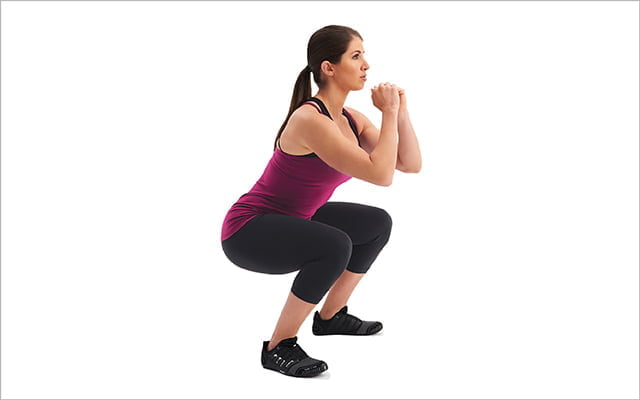
- Stand with feet shoulder-width apart, toes pointed slightly outwards
- Keeping your chest up and core engaged, lower your body down as if you are sitting back into a chair
- Lower until your thighs are parallel to the ground, then push back up through your heels to standing
Lunges
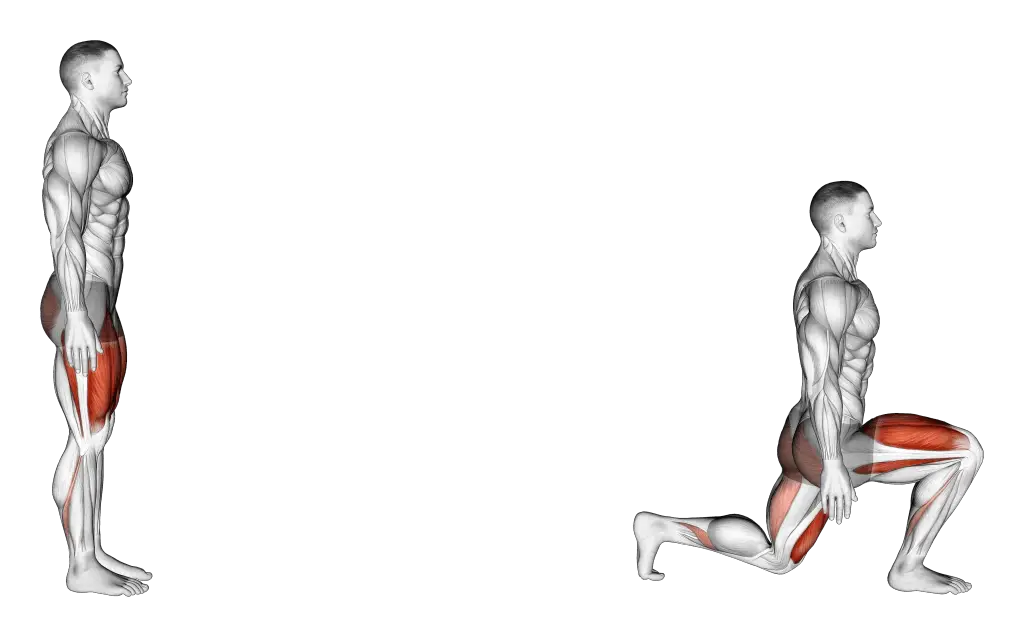
Lunges work the quads, hamstrings, glutes, and core. To perform a lunge:
- Start standing with feet hip-width apart
- Step one foot forward and lower your body down until your front knee is at a 90-degree angle
- Push back up through your front heel to standing, then repeat on the other side
Deadlifts
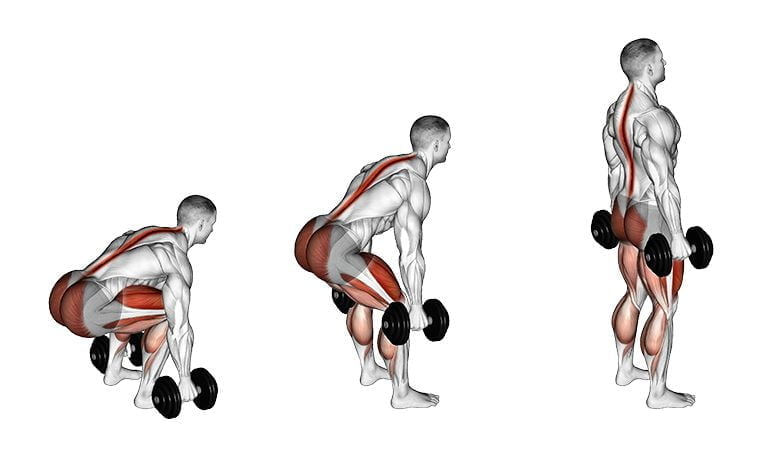
Deadlifts are a compound exercise that works the hamstrings, glutes, and lower back. To perform a deadlift:
- Stand with feet hip-width apart and a barbell or dumbbell in front of you
- Keeping your chest up and core engaged, hinge at the hips and lower the weight down towards the ground
- Keep the weight close to your body as you lift it back up to standing, using your glutes and hamstrings to power the movement
Push-ups
Push-ups are a compound exercise that works the chest, shoulders, triceps, and core. To perform a push-up:
- Start in a plank position, with hands shoulder-width apart and feet hip-width apart
- Keeping your core engaged and body in a straight line, lower your body down towards the ground by bending your elbows
- Push back up to the plank position to complete one rep
Pull-ups
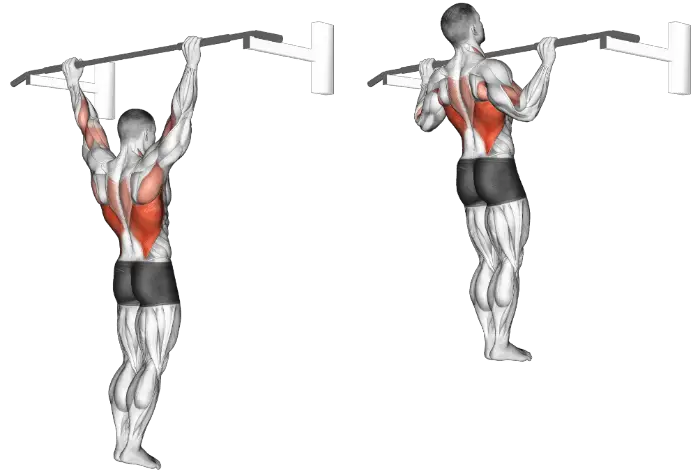
Pull-ups are an upper body exercise that works the back, shoulders, and arms. To perform a pull-up:
- Start hanging from a bar with hands slightly wider than shoulder-width apart
- Engage your back muscles and pull your body up towards the bar until your chin is above the bar
- Lower your body back down to starting position to complete one rep
Dumbbell Rows
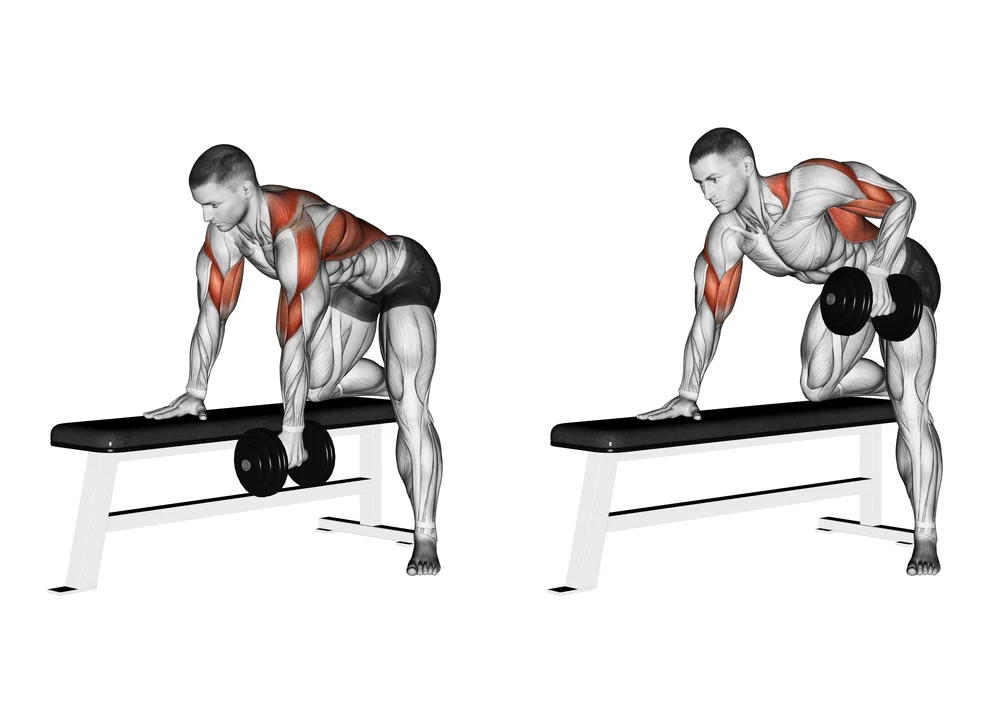
Dumbbell rows work the upper back, shoulders, and biceps. To perform a dumbbell row:
- Start with a dumbbell in one hand and a bench or chair in front of you
- Place your opposite knee and hand on the bench or chair, keeping your back flat and core engaged
- Pull the weight up towards your chest, keeping your elbow close to your body
- Lower the weight back down to starting position to complete one rep, then repeat on the other side
Bench Press
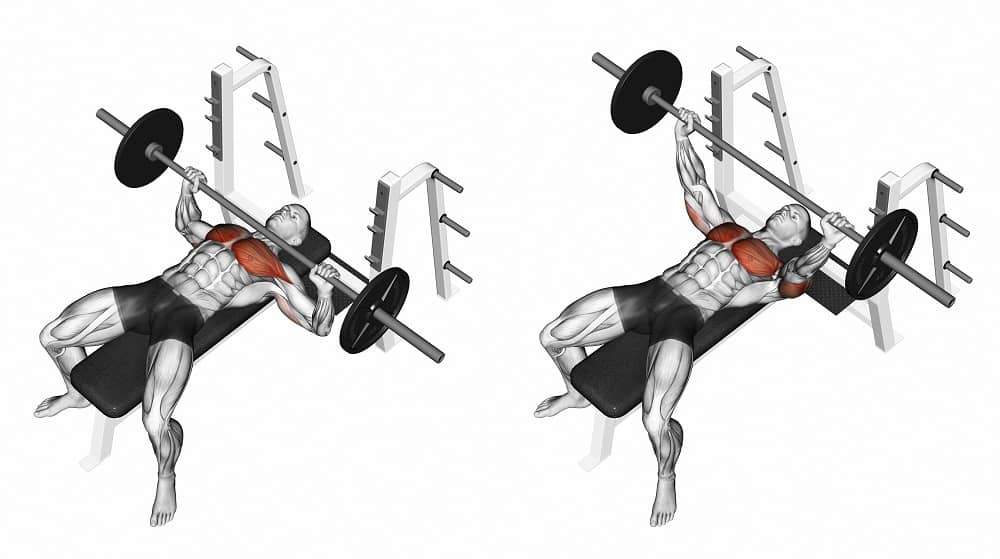
The bench press works the chest, shoulders, and triceps. To perform a bench press:
- Lie down on a bench with feet flat on the ground and a barbell or dumbbell in your hands
- Lower the weight down towards your chest, keeping your elbows close to your body
- Push the weight back up to starting position to complete one rep
Shoulder Press
Shoulder press works the shoulders, triceps, and upper back. To perform a shoulder press:
- Stand with feet shoulder-width apart and a dumbbell in each hand
- Start with your arms at a 90-degree angle, with your elbows at shoulder height
- Press the weights up overhead, extending your arms fully
- Lower the weights back down to starting position to complete one rep
When starting a resistance training program, it’s important to focus on proper form and gradually increase the weight over time.
Designing a Resistance Training Program
Here’s an explanation of designing a resistance training program for female beginners:
I. Frequency, intensity, and volume
- Frequency refers to how often a person engages in resistance training. For female beginners, it’s recommended to start with 2-3 resistance training sessions per week, allowing at least one day of rest between sessions.
- Intensity refers to the level of difficulty of the exercises performed. For female beginners, it’s recommended to start with a moderate level of intensity that allows for proper form and technique. This can be gradually increased as the individual becomes stronger and more experienced.
- Volume refers to the total amount of work performed during a resistance training session, including the number of sets and reps for each exercise. For female beginners, it’s recommended to start with 1-2 sets of 8-12 reps for each exercise, gradually increasing the volume as their strength and endurance improve.
II. Progression
- Progression refers to the gradual increase in difficulty of a resistance training program over time. This can involve increasing the weight lifted, the number of reps performed, or the number of sets completed. For female beginners, it’s recommended to progress slowly and steadily to avoid injury and ensure proper form and technique are maintained.
- Some ways to progress a resistance training program include adding weight, increasing the number of reps or sets, or reducing the rest time between sets.
III. Rest and recovery
- Rest and recovery are essential components of any resistance training program. It’s important to allow the body enough time to recover between workouts, particularly when starting out. For female beginners, it’s recommended to allow at least one day of rest between resistance training sessions, and to get adequate sleep and proper nutrition to support recovery and muscle growth.
- Some ways to promote rest and recovery include getting enough sleep, eating a balanced diet with adequate protein, and incorporating activities such as yoga or stretching into the overall fitness routine.
Overall, designing a resistance training program for female beginners should involve careful consideration of frequency, intensity, and volume, as well as a focus on progression and rest and recovery. It’s important to start with a program that is appropriate for the individual’s fitness level and goals, and to progress slowly and steadily over time to avoid injury and ensure continued progress.
Common Mistakes to Avoid
Here are some common mistakes to avoid when it comes to resistance training for female beginners:
- Overtraining: Overtraining occurs when a person exercises too frequently or at too high of intensity without allowing enough time for recovery. This can lead to fatigue, injury, and lack of progress. Female beginners should start with a manageable frequency and intensity level and gradually increase as they become stronger and more experienced.
- Improper form: Proper form and technique are essential to avoid injury and maximize the benefits of resistance training. Female beginners should start with lighter weights and focus on proper form and technique before progressing to heavier weights or more complex exercises. It can also be helpful to work with a personal trainer or watch instructional videos to ensure proper form.
- Lack of variety: Performing the same exercises repeatedly can lead to boredom and lack of progress. Female beginners should aim to incorporate a variety of exercises that target different muscle groups and provide a challenge. This can also help prevent injury and promote overall fitness.
- Neglecting rest and recovery: Rest and recovery are essential components of any resistance training program. Female beginners should allow at least one day of rest between resistance training sessions and get adequate sleep and proper nutrition to support recovery and muscle growth.
- Focusing solely on cardio: While cardio exercise is important for overall health and fitness, resistance training is also essential for building strength, toning muscles, and improving body composition. Female beginners should aim to incorporate both cardio and resistance training into their fitness routine for optimal results.
By avoiding these common mistakes, female beginners can optimize their resistance training program and achieve their fitness goals while minimizing the risk of injury or burnout.
Nutrition and Supplementation for Women
Here’s an explanation of nutrition and supplementation for female beginners in resistance training:
I. Importance of Nutrition
Good nutrition is essential for success in resistance training. Adequate nutrition helps to build muscle, improve strength and endurance, and enhance overall performance. It’s important for female beginners in resistance training to ensure they are consuming enough calories and nutrients to support their training goals.
II. Macronutrient Breakdown
A macronutrient breakdown refers to the ratio of carbohydrates, proteins, and fats in your diet. For female beginners in resistance training, a balanced diet that includes adequate amounts of each macronutrient is important. Carbohydrates are essential for energy during workouts, while protein is crucial for muscle repair and growth. Healthy fats help regulate hormones and support overall health. A balanced macronutrient intake for female beginners in resistance training could be around 40-50% carbohydrates, 25-30% protein, and 20-30% healthy fats.
III. Timing of Meals
The timing of meals is also important for female beginners in resistance training. Eating protein and carbohydrates within 30 minutes of completing a resistance training workout can help support muscle recovery and growth. Eating a balanced meal 2-3 hours before a workout can also help provide the necessary energy for a successful workout.
IV. Supplements to Consider
While supplements are not necessary for resistance training, some may be beneficial for female beginners. Protein powders and bars can help supplement protein intake, especially for those who struggle to consume enough protein through whole foods. Creatine may also be useful for improving strength and muscle growth. Other supplements to consider may include multivitamins, omega-3s, and electrolyte replacements.
Remember that while nutrition and supplementation can be beneficial for female beginners in resistance training, it’s important to consult a healthcare professional or registered dietitian to ensure you are meeting your individual needs and goals.
FAQs
Q. Can resistance training make women bulky?
Ans. One of the most common misconceptions about resistance training for women is that it will make them bulky. However, this is not necessarily true. Resistance training can actually help women develop lean muscle mass, which can improve their body composition, metabolism, and overall health. However, the amount of muscle mass gained depends on many factors, such as genetics, diet, and training intensity. Women have lower levels of testosterone than men, which makes it harder for them to gain muscle mass. Therefore, resistance training for female beginners can help them achieve a toned and athletic look without getting bulky.
Q. How long does it take to see results?
Ans. The results of resistance training for female beginners depend on several factors, including the frequency, intensity, and consistency of their workouts, as well as their diet and lifestyle habits. Generally, beginners can expect to see noticeable improvements in their strength and muscle tone within a few weeks or months of starting a resistance training program. However, it can take longer to see significant changes in body composition, such as fat loss and muscle gain. With consistent effort and a well-designed training program, women can achieve their fitness goals and see lasting results.
Q. Is it safe for pregnant women to do resistance training?
Ans. Resistance training for female beginners can be safe and beneficial during pregnancy, but it’s important to consult with a healthcare provider before starting any new exercise program. In general, resistance training can help pregnant women maintain their strength, flexibility, and cardiovascular health, which can help them during labor and delivery. However, some exercises may need to be modified or avoided to accommodate the physical changes that occur during pregnancy. It’s also important to listen to your body, avoid overexertion, and stay hydrated during workouts.
Q. Can resistance training help with weight loss?
Ans. Yes, resistance training for female beginners can be an effective way to lose weight and improve body composition. Resistance training helps to build lean muscle mass, which increases metabolism and burns calories even when the body is at rest. In addition, resistance training can help to reduce body fat and improve overall fitness levels. However, it’s important to combine resistance training with a healthy diet and lifestyle habits to achieve the best results. A well-designed resistance training program can help women lose weight, tone their muscles, and improve their overall health and well-being.
Conclusion
Resistance training can have a significant positive impact on women’s overall health and well-being. Not only can it help build strength and muscle mass, but it can also improve bone density, boost metabolism, increase energy levels, and enhance overall body composition.
If you’re a female beginner looking to get started with resistance training, remember that it’s never too late to begin. Start with basic exercises like squats, lunges, and push-ups, and gradually increase the intensity and volume of your workouts as you become more comfortable. Be sure to incorporate proper rest and recovery into your routine, and focus on nutrition and supplementation to support your progress.
Above all, remember that the most important thing is to stay committed and consistent. Resistance training for female beginners can be challenging, but with dedication and hard work, you can achieve your fitness goals and enjoy all the benefits that come with a strong and healthy body. So don’t be afraid to take the first step and get started today!

Good day, and welcome to Fitthour. My name is Shubham Vijay, and I am a certified personal trainer and nutrition coach with 6 years of experience in the fitness industry. At Fitthour, we specialize in types of training, such as strength training, cardio, or HIIT, and our mission is to help clients achieve their fitness goals and improve their overall health.




